

Although millipedes are subtle bugs that don’t bite or hurt and typically can’t survive inside, being near the sticky irritating substance they emit when distressed can lead to an allergic reaction. These organisms are often brown or black in appearance, with divided bodies and countless legs. They are easily mistaken for centipedes because of their large mandibles and short antennae. Knowing how to get rid of millipedes can be challenging if you don’t know what to do.
Millipedes are useful in small quantities because they swiftly decompose rotting material. However, if there is an excessive number of millipedes in your garden or within your house or other building, these should be addressed. Once these creatures settle in your lawn or house, millipedes can be relatively tough to eliminate, but understanding these little creatures can help you to manage them better.
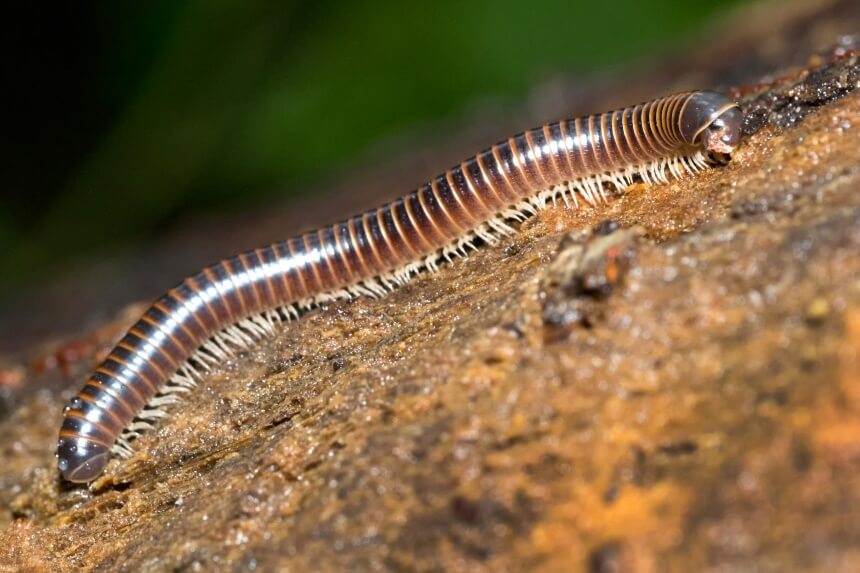
Identifying the pest is the first step to beginning pest treatments. Centipedes, which share the same name as millipedes, are sometimes confusing to differentiate. Even though they may have similar appearances, they differ in certain ways. And there are even different methods of getting rid of centipedes.
The length of a regular millipede varies from 0.6 to 2 inches, and its tube-shaped body is often black or tan but can also occasionally be white or red. In addition to having pair of legs for each body segment, their antennae are rather short. Depending on the species, millipedes can have anywhere from 40 to 400 legs.
On the other hand, centipedes are typically larger and can be as long as 6 inches. They are somewhat golden in color and have flattened bodies. They have longer antennae and one set of long legs for each body segment.
Once you are sure that you are having a millipede problem, you should do an investigation to identify their primary habitats and the factors that draw them to your home. You can inspect humid and dark areas like your garages, basements, or first floors. If you occasionally find them outdoors in your lawns or gardens, inspect mulched areas like bricks, stones, leaf litter, moist soil, and woodpiles.
Bear in mind that you’re searching for millipedes in moisturized areas. If there are regions around your home or outside where moisture collects, search there. You might even stumble upon a breeding site.
Bagworms and slugs are also common in places with millipedes, so you must know how to get rid of them too. Luckily, you can also get rid of bagworms and slugs with some of the millipede treatment methods outlined in this article.
After confirming possible places where you found millipedes, then it’s time to begin treatment. There are several methods to adopt. Some use natural, and others use pesticides or other means. We will briefly discuss some methods of ridding your home of these annoying creatures.
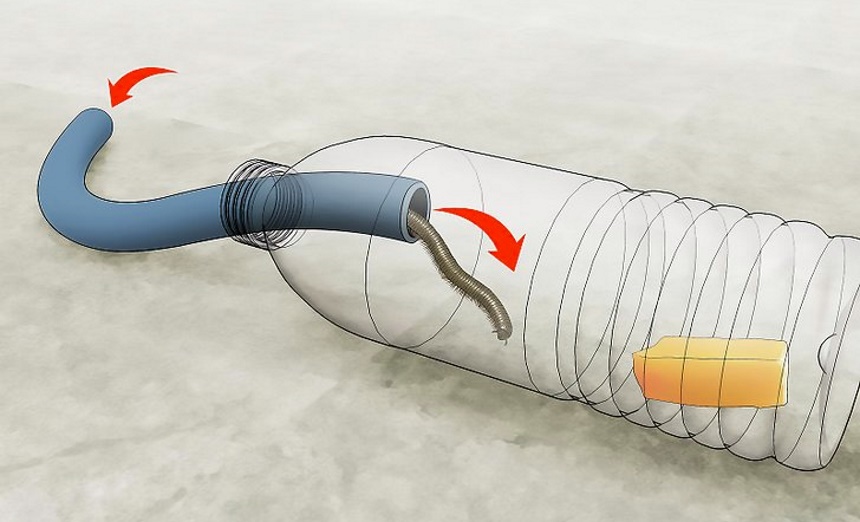
As the fruit begins to rot, millipedes will get inside the bottle to eat the fruits, but they won’t be able to get out.
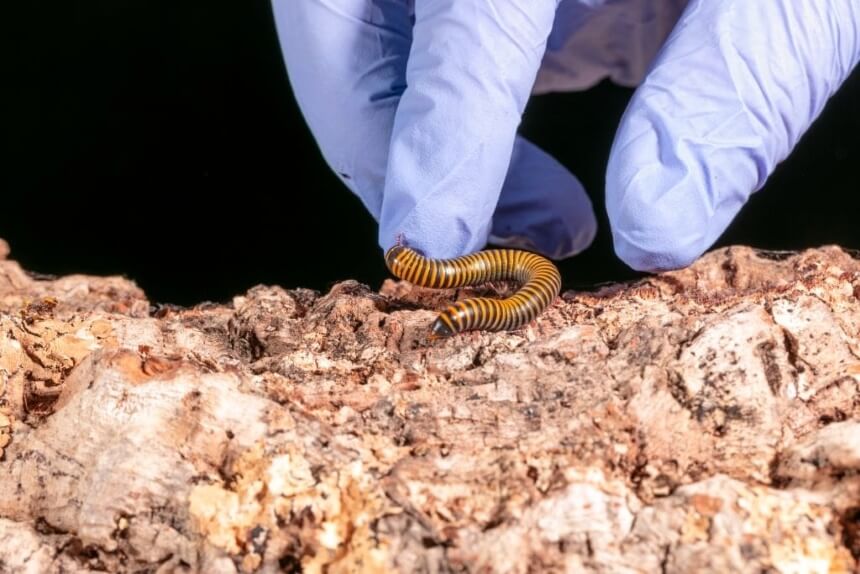




Using insecticides is another way of treating your house from millipede infestation. Check out the following methods.
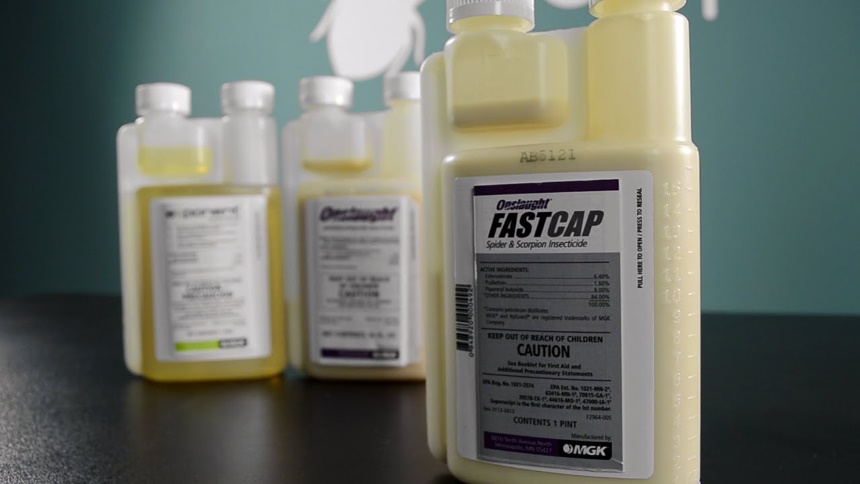
Check the label to ensure you can apply it safely within gaps and crevices and on the exterior of your house or other structure.
Next, pick your preferred spraying apparatus, a submersible pump sprayer. Read the instructions on the label to know how to mix the liquid with water.
Next, fill your sprayer with half the required water while donning safety gloves and tank tops. The Insecticide should be added as required. Close the lid and shake thoroughly before spraying.

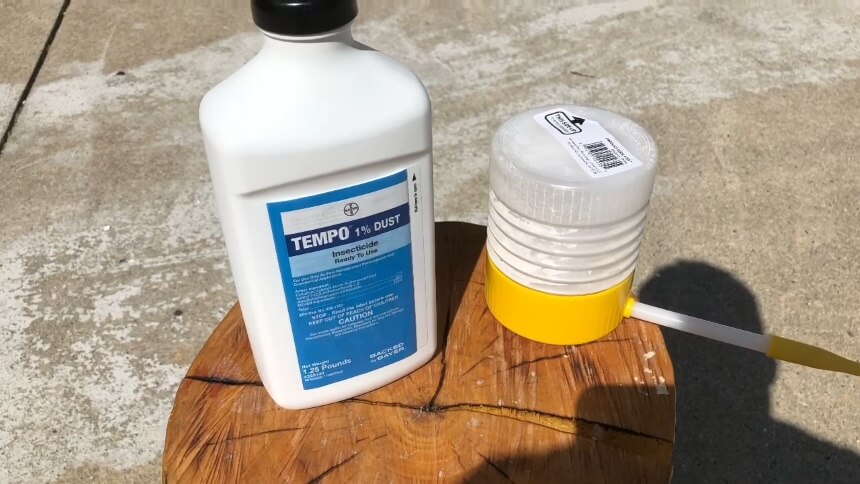
Remember to select insecticide dust suitable for use in moist locations when making your selection because millipedes are frequently found. For wet and humid regions, a dust insecticide works well. Make sure the pesticide dust is indicated for millipedes and is safe to use both indoors and outside by reading the label. After snow or rain, outdoor dust sometimes has to be reapplied.
As with any bug, prevention is crucial to stopping infestations in their tracks. The most reasonable thing to do is to prevent millipede infestations from the beginning. Even though the techniques above are excellent for existing millipede problems. To help keep millipedes away, use these preventative strategies.
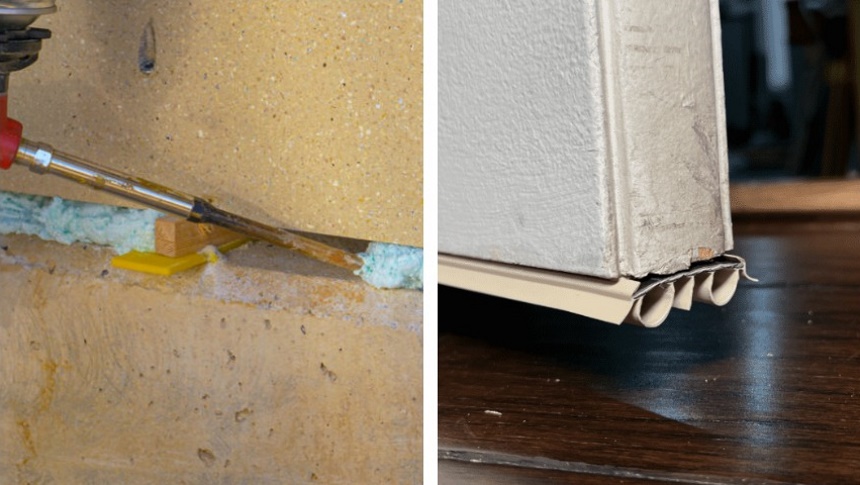
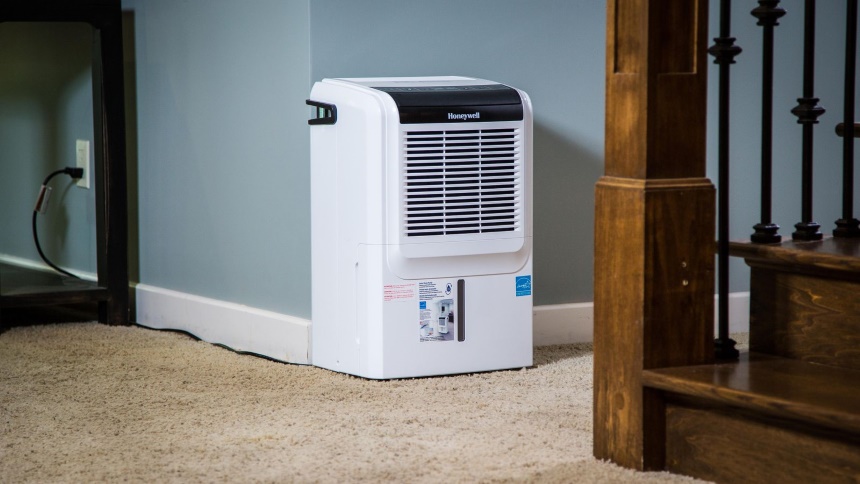
Keeping your house dry can make it less appealing to millipedes because they are attracted to damp surroundings. Use a towel to dry off any extra moisture in the bathroom and kitchen from dishwashing and other activities. When feasible, use far less water, and avoid running the faucets all the time.
Any liquid-filled containers should be sealed or capped. Instead of washing dishes throughout the day, try to do so all at once. Wipe up any extra moisture that develops in garages and basements. Remove any spilled water right away. Dry your vehicles, boats, gear, and equipment outside. Any damp equipment should be kept outside. Use a dehumidifier if required. Install gully guards or clean out any blocked gutters outdoors. Don’t let water get near your foundation.
Although several millipedes have ducts that can produce irritating fluids some people may be allergic to, millipedes are generally not poisonous. Nevertheless, some millipedes have protective sprays that include hydrochloric acid, which can burn the skin and result in long-term skin discoloration.
Millipedes frequently inhabit indoor spaces when conditions outside are unfavorable, such as excessive rain, dryness, and colder temperatures. They will seek cover indoors during periods of heavy rain, and they will seek water indoors during periods of drought.
Most millipedes are scavengers in their native environment. They consume bits of rotting or moist wood. Additionally, they consume dead plants and other plant matter. When their habitat becomes too dry, millipedes will destroy living plants.
Even though millipedes aren’t hazardous and are sometimes even viewed positively, if you encounter them in your household, they could be a pain.
If you’re unsure how to get rid of millipedes by yourself, you can contact your neighborhood pest control service for a free evaluation and suitable treatment plan.